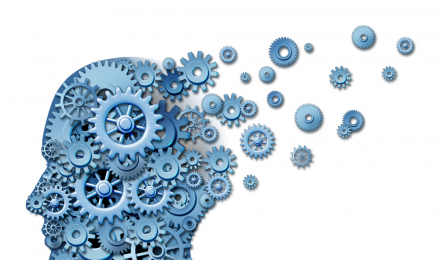Organizations collect several metrics to assess people holistically: quality of life, gross domestic product, birth rates, etc. This article concerns one of these metrics, the cost of living. It will define this metric, comment on what goes into its assessment, discuss why most people are unable to afford it, and suggest policy changes to bring it back in line.
What is “Cost of Living” and How is It Assessed?
Cost of living is money needed to maintain a specific lifestyle within a certain geographic area. Major factors that account for a given area’s cost of living include the cost of goods, housing, heating, power, electricity, water, and gasoline.
Water
Humans need water for many purposes. If water bills become too expensive, people become more careful about when they wash their bodies, wash their clothes, get something to drink, collect water for a recipe, flush their toilet, or wash their utensils and dishes after eating a dish.
Energy
Whether a person’s home is powered by gasoline, electricity, hydroelectric power, solar power, or some other means, multiple aspects of modern living demand the need for energy. For example, it is one thing to have running water but without the energy resources needed to heat that water, washing up the body, clothes, and dishes after a messy day of work will be a chilly, attention-grabbing experience. The factor of energy costs can be further examined by looking into how much fuel is needed to power a vehicle while commuting to work or running electricity to work at a computer from home.
Food
Food is a vital requirement of human life because it provides the sustenance needed to stay alive and do things. While there are different tiers of food a person might stock their kitchen with, that person may need to buy food for more than themselves; every extra mouth to feed, even if that mouth might belong to just a pet, considerably increases the amount of money a person needs to buy food or otherwise cultivate their own.
Housing
Shelter is among the foundational elements on Maslow’s Hierarchy of Needs, especially since it can give you the security to sleep without being at risk of harm or theft. Housing is also among the most costly factors involved in calculating the cost of living. Generally speaking, the better the environment and amenities, the more a property can cost a person, especially if the property or the land it is built upon is owned by another party and renting becomes the primary means of paying for such housing.
Why is This Cost Rising Beyond Most Americans’ Grasps?
When the COVID-19 pandemic was in full effect, prices for everything jumped up as businesses adjusted their operations and people spent more while worried. By the middle of 2022, inflation settled at 9%, the highest rating seen in a generation. While inflation has reduced back to familiar levels, prices remain in the nosebleed section; while prices have remained roughly 23% above normal since October 2019, most companies have used inflation as a smoke screen for keeping their prices above pre-pandemic values.
Initially, the pandemic played havoc with supply chains across the planet, leading to shortages in supplies and delays in transportation. Then there was the issue of increased interest in shopping online and working from home, which led business sectors to scramble and optimize their assets like office space. A shortage in labor and a break from the daily grind allowed many Americans to realize how much their labor was worth, encouraging higher wages and contributing to greater business expenses.
Then you add factors like the Russian invasion of Ukraine that elevated the prices of food and gas at home. Less housing on the market led to higher prices for homebuyers and rents. A rise in car insurance rates during the pandemic correlated to above-average insurance claims. While the economy has normalized and inflation has slowed down on paper, most consumers are not seeing many prices dipping back to what should be normal.
Most households endured these price increases because the average wage outpaced inflation. Savings also rose above and beyond what would have normally been possible thanks, in part, to initiatives like the expanded child tax credit, stimulus checks, and special loans. Despite these many gains, most consumers have blamed inflation for the rising cost of living because pay raises have not risen to meet that cost and remain affixed to job performance. The result of this sort of labor arrangement is that most Americans feel that these high prices have forced them to spend less as a whole.
What Can Be Done?
The simplest answers to this question also happen to be the ones most difficult to make a reality.
Raising/Revising the Minimum Wage
While minimum wage became a labor policy in 1938, it stopped keeping pace with inflation and productivity by 1968. The original idea of wages that rose with productivity made sense encouraged workers to work harder. If minimum wage only kept parity with inflation, Americans could purchase the same amount of goods regardless of their price. If minimum wage were revised to account for productivity and inflation, even those making minimum wage could purchase more; currently, such an hourly minimum wage would exceed $21.
Universal Basic Income (UBI)
A notion that some European nations have instituted to overwhelming praise is UBI. This policy ensures that a person can afford a basic living. As more and more companies look to automation as a long-term solution to the “expense” of paying employees, UBI remains a favorable way to ensure that these displaced humans can continue to enjoy a familiar way of life. Of course, such policies are stymied by those who see UBI as government-sanctioned freeloading, Socialist, Communist, and/or un-Christian.
If American living is to become less costly, such change must come from policy. Whether that change comes from returning minimum wage to its original calculations, dedicating tax funds to UBI, or some other innovative policy, change is required to bring American income closer to the cost of living.
Organizations collect several metrics to assess people holistically: quality of life, gross domestic product, birth rates, etc. This article concerns one of these metrics, the cost of living. It will define this metric, comment on what goes into its assessment, discuss why most people are unable to afford it, and suggest policy changes to bring it back in line.
What is “Cost of Living” and How is It Assessed?
Cost of living is money needed to maintain a specific lifestyle within a certain geographic area. Major factors that account for a given area’s cost of living include the cost of goods, housing, heating, power, electricity, water, and gasoline.
Water
Humans need water for many purposes. If water bills become too expensive, people become more careful about when they wash their bodies, wash their clothes, get something to drink, collect water for a recipe, flush their toilet, or wash their utensils and dishes after eating a dish.
Energy
Whether a person’s home is powered by gasoline, electricity, hydroelectric power, solar power, or some other means, multiple aspects of modern living demand the need for energy. For example, it is one thing to have running water but without the energy resources needed to heat that water, washing up the body, clothes, and dishes after a messy day of work will be a chilly, attention-grabbing experience. The factor of energy costs can be further examined by looking into how much fuel is needed to power a vehicle while commuting to work or running electricity to work at a computer from home.
Food
Food is a vital requirement of human life because it provides the sustenance needed to stay alive and do things. While there are different tiers of food a person might stock their kitchen with, that person may need to buy food for more than themselves; every extra mouth to feed, even if that mouth might belong to just a pet, considerably increases the amount of money a person needs to buy food or otherwise cultivate their own.
Housing
Shelter is among the foundational elements on Maslow’s Hierarchy of Needs, especially since it can give you the security to sleep without being at risk of harm or theft. Housing is also among the most costly factors involved in calculating the cost of living. Generally speaking, the better the environment and amenities, the more a property can cost a person, especially if the property or the land it is built upon is owned by another party and renting becomes the primary means of paying for such housing.
Why is This Cost Rising Beyond Most Americans’ Grasps?
When the COVID-19 pandemic was in full effect, prices for everything jumped up as businesses adjusted their operations and people spent more while worried. By the middle of 2022, inflation settled at 9%, the highest rating seen in a generation. While inflation has reduced back to familiar levels, prices remain in the nosebleed section; while prices have remained roughly 23% above normal since October 2019, most companies have used inflation as a smoke screen for keeping their prices above pre-pandemic values.
Initially, the pandemic played havoc with supply chains across the planet, leading to shortages in supplies and delays in transportation. Then there was the issue of increased interest in shopping online and working from home, which led business sectors to scramble and optimize their assets like office space. A shortage in labor and a break from the daily grind allowed many Americans to realize how much their labor was worth, encouraging higher wages and contributing to greater business expenses.
Then you add factors like the Russian invasion of Ukraine that elevated the prices of food and gas at home. Less housing on the market led to higher prices for homebuyers and rents. A rise in car insurance rates during the pandemic correlated to above-average insurance claims. While the economy has normalized and inflation has slowed down on paper, most consumers are not seeing many prices dipping back to what should be normal.
Most households endured these price increases because the average wage outpaced inflation. Savings also rose above and beyond what would have normally been possible thanks, in part, to initiatives like the expanded child tax credit, stimulus checks, and special loans. Despite these many gains, most consumers have blamed inflation for the rising cost of living because pay raises have not risen to meet that cost and remain affixed to job performance. The result of this sort of labor arrangement is that most Americans feel that these high prices have forced them to spend less as a whole.
What Can Be Done?
The simplest answers to this question also happen to be the ones most difficult to make a reality.
Raising/Revising the Minimum Wage
While minimum wage became a labor policy in 1938, it stopped keeping pace with inflation and productivity by 1968. The original idea of wages that rose with productivity made sense encouraged workers to work harder. If minimum wage only kept parity with inflation, Americans could purchase the same amount of goods regardless of their price. If minimum wage were revised to account for productivity and inflation, even those making minimum wage could purchase more; currently, such an hourly minimum wage would exceed $21.
Universal Basic Income (UBI)
A notion that some European nations have instituted to overwhelming praise is UBI. This policy ensures that a person can afford a basic living. As more and more companies look to automation as a long-term solution to the “expense” of paying employees, UBI remains a favorable way to ensure that these displaced humans can continue to enjoy a familiar way of life. Of course, such policies are stymied by those who see UBI as government-sanctioned freeloading, Socialist, Communist, and/or un-Christian.
If American living is to become less costly, such change must come from policy. Whether that change comes from returning minimum wage to its original calculations, dedicating tax funds to UBI, or some other innovative policy, change is required to bring American income closer to the cost of living.



